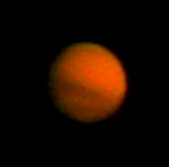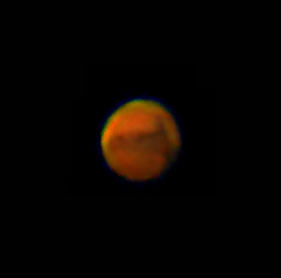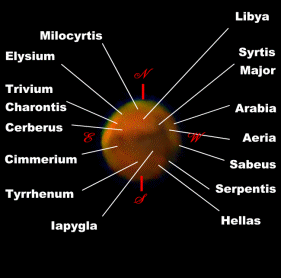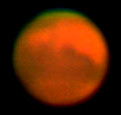
Image information: Image is a composite of three images taken between 06/12/2005 19:54 and 21:19UT. Image has undergone major contrast enhancement and sharpening using a point-spread function. As a result of the wide time spacing of the images, some detail may have been lost.
Physical information: Disc diameter: 15.9", centre at long. ~190, lat. -19, south pole earthward and sunlit, phase 0.96, distance 0.587AU (88M km), altitude ~50 degrees.


Image information: Image taken 29/11/2005 21:26 UT, using a Sony DSC-H1 bootstrapped onto the back of the 12" telescope. Image taken at camera focal length 11mm, F/3.5, ISO-64, 0.02s exposure. Image has undergone non-linear contrast enhancement, noise removal, and sharped using a 5-pixel radius before a flip and 30 degree rotation.
Physical information: Disk diameter: 17.1", centre at long. 269.2, lat -18.9, south pole earthward & sunlit, phase 0.974, distance: 0.547AU (82M km), altitude: 51.5 degrees.

Image information: Image taken 17/11/2005 20:30-21:00 UT, using a Sony DSC-H1 bootstrapped to the back of the 12" telescope. A stack of 8 exposures with varying parameters was used to achieve disc contrast, then averaged with a single image contrast enhanced and sharped to bring out detail.
Physical information: Disk diameter: 18.9", centre at long. 6, lat -17.4, south pole earthward & sunlit, phase 0.993, distance 0.495AU (74M km), altitude 44 degrees.